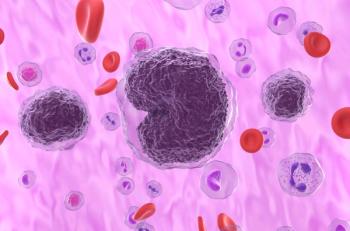
US Women Have Higher Risk of Dying Prematurely, Report Says
In the United States, a woman age 30 to 70 years of age has a 1 in 8 chance of dying from a noncommunicable disease (NCDs), putting the nation on par with low and middle-income countries, and setting it apart with Iceland among high-income countries, according to a report published Thursday in The Lancet.
In the United States, a woman age 30 to 70 years of age has a 1 in 8 chance of dying from a noncommunicable disease (NCD), putting the nation on par with low- and middle-income countries, and setting it apart with Iceland among high-income countries, according to a report published Thursday in
The analysis was published before the third United Nations High-Level Meeting on NCDs beginning September 27. The report said more than half of all countries are predicted to fail to reach the UN target to reduce premature deaths from 4 major NCDs by 2030:
The report is part of an effort to push nations to implement policies that reduce premature deaths and meet a Sustainable Development Goal (SDG) to reduce the number of deaths caused by those 4 major NCDs in people aged between 30 and 70 years by a third by 2030.
It is also the first report from NCD Countdown 2030, an independent annual monitor of progress on reducing the worldwide burden of NCDs. The collaboration is led by The Lancet, World Health Organization, Imperial College London and NCD Alliance.
To accelerate reductions in premature deaths from NCDs, the report calls for policies and interventions that reduce tobacco and alcohol use, including fiscal and regulatory measures, such as taxation, warning labels, restriction of availability and sales, and banning of marketing, advertising, and public smoking.
It also warned about
They also call for early diagnosis and treatment of NCDs, including timely diagnosis and treatment of hypertension, diabetes, treatable cancers, and other acute and chronic NCDs.
The report compares the change in death rates for 186 countries from 2010 to 2016 to understand how likely it is for countries to achieve the SDG target for NCDs. Worldwide in 2016, cancers, cardiovascular disease, chronic respiratory disease, and diabetes were responsible for 12.5 million deaths among people aged 30 to 70 years.
Women are least likely chance to die prematurely in South Korea, where there is only a 1 in 20 chance of dying before 70 from an NCD. It is highest for women in Sierra Leone, where the risk is about 33%, an almost 7-fold larger risk.
For men, the risk was lowest in Iceland (10%) and highest in Mongolia (39%). In the United States, the risk for men is 18%.
When all NCDs are considered, including liver and kidney disease, as well as all ages under 80, progress is even slower. Only 17 countries (9%) for women and 5 countries (3%) for men on track to meet a third reduction on mortality rates by 2030.
“Despite clear commitments, international aid agencies and national governments are doing too little to reduce deaths from cancers, heart and lung diseases and diabetes. Progress is even slower for other diseases that are not a part of SDG target, meaning that the true health of people in most countries is even more dire,” said senior author Professor Majid Ezzati, Imperial College London, in a statement.
In addition, the reduction in NCD deaths has stagnated or increased since 2010 among women in 15 countries (8%) and men in 24 countries (13%), including for women in the United States.
The authors believe that stagnation in the United States is due to failures to reduce premature deaths from NCDs other than in cancer, which has continued to decrease, while the decline from other NCDs has slowed down or reversed. This is thought to be particularly common in poorer rural communities, they wrote.
Although NCD mortality is decreasing in most countries, the pace of decline varies, even among countries in the same region. Reasons for the lack of improvement may be due to a worsening or lack of improvement in major NCD risk factors, such as blood pressure, diabetes, obesity, and alcohol and tobacco use, or that these countries’ healthcare systems are not able to adequately prevent, treat, and manage NCDs.
Of the 186 countries assessed, the majority of countries (86 countries [46%] for women and 97 countries [52%] for men) will not reach the SDG target even by 2040 and require policies that improve premature death rates.
Reference
Bennett J, Stevens GA, Mathers CD, et al. NCD Countdown 2030: worldwide trends in non-communicable disease mortality and progress towards Sustainable Development Goal target 3.4. Lancet 2018; 392: 1072—88. doi: 10.1016/S0140-6736(18)31992-5.
Newsletter
Stay ahead of policy, cost, and value—subscribe to AJMC for expert insights at the intersection of clinical care and health economics.













































